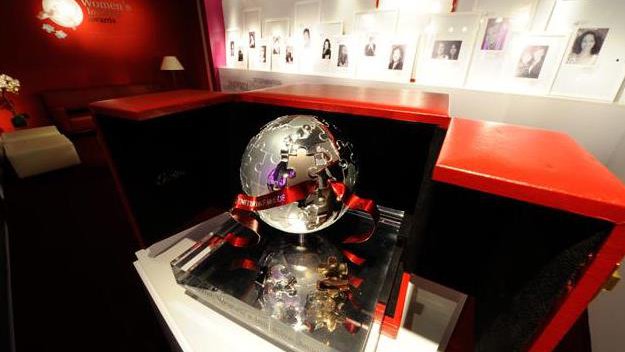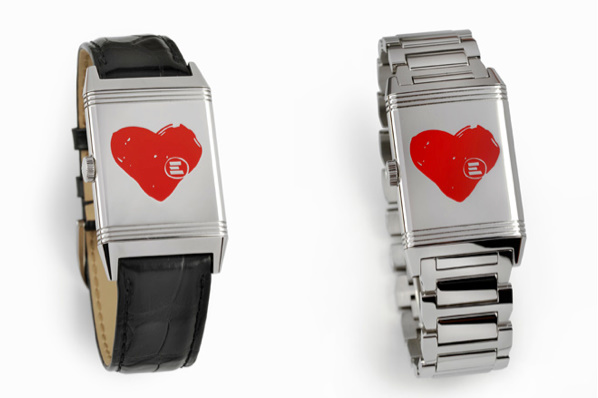The Jewellery Editor, Maria Doulton, examines emerging environmental and social themes within the jewellery and timepieces sector

The Jewellery Editor, Maria Doulton, examines emerging environmental and social themes within the jewellery and timepieces sector
Last Friday, 14 October, Cartier announced the 6 winners of their Women’s Initiative award at the Women’s Forum and Society in Deauville, France. This is the 5th year that the luxury watch and jewellery house has been the main sponsor of this initiative that has so far supported 76 women entrepreneurs from around the world.
Ho hum, you may think. Another day, another award. But while attending the Paris event and meeting some of the 18 finalists during the weeklong build up to the finals, something struck me. The atmosphere was so unlike any other luxury sector event I have attended.
It was decidedly unglamorous and a sleeves-rolled atmosphere pervaded amongst the women from around the world, ranging from making handbags out of discarded London firemen’s hosepipes, to providing bicycles for the poorest villagers in Mozambique or creating educational programmes for children in China.
Lorna Rutto, one of the winners, told me gleefully how she set up a company in Kenya to make fence posts out of used, dirty plastic bags. Her project benefits the environment (it saves trees) as well as the Nairobi slum community who forage for the plastic bags among the rubbish. And it’s nice to know that some of her clients are the nature reserves.
“ It’s about real people, doing real things. If we made it glamorous our finalists would find it difficult to relate to. This is about them, we are not here to talk about jewellery ”
The 6 winners receive US $20,000, a year’s coaching and support, networking opportunities and exposure to the press. That is not to say success is guaranteed. One only has to look at the well-documented trajectories of past finalists, they haven’t all been rosy. So why did Cartier chose to support this unusual and challenging project? And with not a celebrity in sight, rise to the challenge of gaining publicity and sharing the story with the world?
Freja Day of Cartier, who is in charge of the Cartier Women’s Initiative Awards explains: “It’s about real people, doing real things. If we made it more glamorous and luxurious, our finalists who come from all sorts of educational and social backgrounds, would find it difficult to relate to. This is all about them and we are not here to talk about our jewellery.”
Cartier first became involved as sponsors of the Women’s Forum along with McKinsey & Co and INSEAD. Day explains: “As we are a company with lots of women employees it appealed to us. It was the right thing to do in a company with 60% women.”

2011 Cartier Laureate Lorna Rutto, whose company EcoPost collects plastic waste from the Kenyan landscape and uses the material to manufacture fencing posts
The project is run by Cartier employees and takes more commitment than just simply handing over a cheque or a glitzy auction. But according to Day, it resonates with the company ethos: “We are a very ‘people’ company and there is a real entrepreneurial spirit here. We have innovative edge, it’s a sort of audacity and part of our heritage as a pioneering brand.”
That all sounds well and good but there is clear-minded business sense behind the project as My-Linh Ngo, Associate Director for Sustainable and Responsible Investment (SRI) at Henderson Global Investors, explains. Her team identifies companies to invest in on the basis of a combination of conventional financial and non-financial (environmental, social and governance or ESG) analysis. For her, such an approach is valid not just because clients want to do the right thing, but because it makes business sense.
“By considering both financial and ESG factors, you can get a better picture about how successful the company is likely to be in the future. ESG requires looking explicitly at the company culture, and nature and quality of its relationships with its stakeholders, and these factors are critical for a sustainable business,” explains Ngo. “Often, financial analysis involves looking at lagging indicators of success, whilst ESG analysis (such as customer service, employee and supplier relations) can give more of a leading indicator of how a company is positioned for the future,”
“ Being a ‘good’ company is no longer an ‘option’. As ESG issues come more and more to the fore, everyone across the board will have to do it ”
Though her funds do not generally invest in the luxury sector, she sees many of the relevant ESG issues are similar to other sectors they do invest in, such as retail. “ESG issues that impact on perceptions of brand are critical for companies in the luxury space, and how companies approach this can help them differentiate themselves and command a premium. In the area of community/philanthropic activities, the nature of those would give an insight into its culture and values."
“So in this case, I would value an involved and challenging project like the Cartier Women’s Initiative award more highly than one that is more hands-off and gimmicky, say involving a celebrity to give a cheque to a charity and get a photo opportunity. Of course, at the end of the day the money goes to good causes in both examples but the type of initiative does give a good sense of the intent of the company in terms of how genuine and long term they are.”
Ngo also believes community projects that involve employees can generate business benefits. “Corporate philanthropic projects that have staff buy-in from the start, of which the Cartier example is one, are more likely to be sustainable as staff have ownership, and the resulting engagement and loyalty you get generates an intangible asset above and beyond what having a good salary could give.”

Jaeger-LeCoultre’s ‘Reverso for Emergency’ initiative, launched as part of the Venice Film Festival
But Ngo sounds a warning note: “Within the luxury sector ESG issues are very relevant, and interest in how companies are managing these is rising from consumers. But on the whole, companies have been slow to react. There are one or two leading examples but the industry as a whole really has to step up their game.”
Which is why, in Ngo’s books, being a ‘good’ company is not an option. “As these ESG issues come more and more to the fore, everyone across the board will have to do it. In some cases it is not just voluntary but even regulatory now (e.g. regulation surrounding sourcing of conflict diamonds or payment of minimum wages for employees). And with celebrities like Leonardo DiCaprio and Lily Cole being very public about their ethical views the consumer base is a lot more aware and willing to act on their environmental and social concerns in their purchasing decisions.”
A feeling clearly shared by Franco Cologni, Chairman of the Haute Horlogerie Foundation that encompasses many of the luxury watch brands. “Responsibility towards the wider community is beginning to interest luxury and Fine Watchmaking,” he is quoted on the Fondation de la Haute Horlogerie website.
The comments came after Mr. Cologni attended a particularly inspiring fundraising evening in Venice, where luxury marque Jaeger-LeCoultre celebrated its Reverso for Emergency project. Throughout the festival, many celebrities and actors were seen raising their hand to their hearts on the red carpet, as a symbol of personal support for the Reverso project.
“ If fine watch companies donated one franc for every watch sold to a cause, how many children could we feed? How much medicine could we buy? ”
Jaeger-LeCoultre committed to finance ten operations at the Salam Centre in Sudan, a Centre for heart surgery opened by “Emergency” Association in Khartoum, offering highly specialised assistance to patients suffering from cardiac pathologies who would not otherwise get a chance to be operated free of charge.
“I got to thinking about how our luxury segment could, or perhaps should, become a vector for well-intentioned compassion towards the weak and the poor. Not for what it might reap in return – nothing is more despicable than ostentatious giving – but to use our powers of communication and persuasion to benefit noble, efficient, on-the-ground, useful causes.”
“And I asked myself, if high-end or Fine Watch companies, beyond what they already do, donated one franc for every watch sold to a similar cause, how many children could we feed? How many structures could we build? How much medicine could we buy?”










